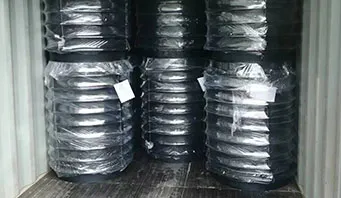
نوفمبر . 06, 2024 23:43 Back to list
Setting the Ideal Temperature for Boiler Water Efficiency and Performance
Understanding Boiler Water Temperature Settings A Essential Guide
Boilers are an indispensable component of many heating systems in residential and commercial buildings. One crucial aspect of boiler operation that often goes unnoticed is the water temperature setting. Maintaining the correct boiler water temperature is vital for efficiency, safety, and system longevity. This article explores the significance of proper boiler water temperature settings, the factors influencing them, and best practices for ensuring optimal performance.
Importance of Boiler Water Temperature Settings
The temperature of water in a boiler significantly impacts its performance and efficiency. Setting the right temperature helps ensure that the system operates effectively, providing heat when needed without wasting energy. An incorrect temperature setting can lead to various issues
1. Inefficiency If the water temperature is set too high, the boiler consumes more fuel, leading to increased energy costs. The unnecessary heat production can contribute to higher carbon emissions as well.
2. Wear and Tear Excessively high temperatures can lead to thermal stress on the boiler and other components, resulting in premature wear and the need for costly repairs or replacements.
3. Safety Risks High-temperature settings can pose safety risks, including the potential for overheating. This can trigger pressure relief valves, activate safety mechanisms, or, in extreme cases, lead to catastrophic failures.
4. Comfort Level Setting the temperature too low may not adequately heat the building, impacting comfort levels for occupants during colder seasons.
Factors Influencing Boiler Water Temperature Settings
Several factors come into play when determining the optimal water temperature settings for a boiler. These include
1. Type of Boiler Different types of boilers (conventional, condensing, or high-efficiency) operate optimally at varying temperature settings. For example, condensing boilers can be more efficient at lower temperatures since they recover heat from exhaust gases that may be lost in traditional systems.
2. System Design The design of the heating system, including the type of radiators, piping, and insulation, can influence the required water temperature. Well-insulated spaces may require less heat, allowing for lower boiler settings.
boiler water temperature setting

3. Outdoor Temperature In colder climates, higher water temperatures are often necessary to compensate for heat loss from buildings. Conversely, during milder months, lower settings can maintain comfortable indoor conditions without excessive energy use.
4. Occupant Needs The comfort preferences of the building's occupants play a significant role in determining ideal water temperatures. Some individuals may prefer warmer indoor environments, while others may enjoy cooler settings.
Best Practices for Setting Boiler Water Temperatures
To ensure optimal boiler water temperature settings, consider the following best practices
1. Refer to Manufacturer Guidelines Always adhere to the manufacturer's recommendations regarding temperature settings. These guidelines are formulated based on the boiler's design and efficiency.
2. Regular Maintenance Schedule regular maintenance to ensure that the boiler and heating system components are functioning properly. This includes checking for leaks, ensuring adequate pressure, and cleaning key parts.
3. Use Modern Controls Invest in modern heating controls such as programmable thermostats or smart systems. These technologies can adjust boiler settings according to occupancy and weather conditions, enhancing efficiency.
4. Monitor System Performance Pay attention to how the heating system responds to temperature changes. Regularly assess comfort levels and energy bills to determine whether adjustments are necessary.
5. Consult Professionals If uncertain about the appropriate settings or if the system requires significant adjustments, consult a heating professional. Their expertise can provide valuable insights and ensure your system operates safely and efficiently.
Conclusion
Boiler water temperature settings are a fundamental aspect of efficient and safe heating system operation. By understanding the importance of these settings and the factors that influence them, homeowners and facility managers can make informed decisions that enhance comfort, extend equipment life, and reduce energy consumption. Regular monitoring and professional maintenance will further ensure that your boiler operates at peak efficiency, contributing to a more sustainable and comfortable environment.
-
Best Steam Boiler Design PDF Free Design Calculation & Diagram Downloads
NewsJun.10,2025
-
Hot Boiler Water Heater Efficient Heating Solutions for Home & Commercial Use
NewsJun.10,2025
-
Steam Boiler Safety Devices High-Quality Protection Valves
NewsJun.10,2025
-
Ultimate Steam Boiler Checklist for Safety & Efficiency
NewsJun.10,2025
-
Optimal Hot Water Boiler Temperature Setting Guide
NewsJun.10,2025
-
Effective Hot Water Boiler Chemical Treatment Protect & Maintain
NewsJun.09,2025
Related PRODUCTS






















